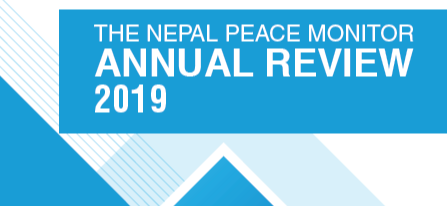Analysis
The Nepal Peace Monitor Annual Review: 2019
2020-05-24

In 2019, Nepal witnessed several notable incidents of human rights violations, a surge in both violent and non-violent political incidents, outrage against legislations tabled by the government, and several governance related contestations in public service institutions. Politically, the PMP data reflects these turbulent times. The number of political incidents dropped in 2018 after all three tiers of the election were held successfuly. However, both violent and non-violent incidents surged this year. Early 2019 saw an escalation of activities of CPN-Chand group in the form of symbolic and remote violence and arson. As in the past, the involvement of cadres of the Biplov led CPN-Chand in violent activities and public protest was observed as their activities aimed to disrupt the government sector and destroy private infrastructures. Similarly, India’s updated political map sparked controversy and agitation in Nepal, with Kathmandu and New Delhi claiming disputed region of Kalapani to be part of their territory. There were a series of protests in Nepal by the youth wings as well as the members of the opposition parties against the government of India for occupying Nepal’s land.
In 2019, the government also grasped attention for taking some controversial moves to constrain the fundamental democratic principles by proposing various contentious bills to shrink civic space. The government suggested a series of legislative bills in the parliament with provisions to criminalize acts which should be protected under the right to freedom of expression. Despite the new republican federal constitution that has envisaged a stronger foundation of rights, the unconstitutional move from the supra-majority government by proposing various controversial bills not only limits the social, political and cultural rights of the citizens but also shrinks the space of civil society.
This report compiles all the violent and non-violent incidents that occurred throughout the year in 2019. The PMP uses a broad range of information sources, including national and district-level newspapers (from 20 districts), and reporting from Nepal police, human rights organizations, UN Sitreps, international agencies, civil society organizations, and citizens directly. The report indicates that, as in 2018, Violence Against Women (VAW) remained the leading cause of violence in Nepal through 2019. The government of Nepal has passed several noteworthy laws and policies with a special focus on prevention and the protection of women and girls. However, in spite of this ostensible progress, factual data regarding the implementation of these laws and policies presents a different picture. Effective implementation is a concern which has long plagued the country across a diversity of sectors, and particularly in relation to women’s rights, empowerment and protection.
2019 witnessed higher numbers of violent as well as non violent incidents compared to previous years (See: Fig 1). There was also an increase in both non-violent and violent political related incidents with 425 and 271 incidents respectively compared to 2018 (186 non-violent incidents and 138 violent incidents). In 2019, violent political incidents increased by 96 percent whereas non violent political incidents increased by 134 percent (See Fig 2). In 2019, the PMP recorded 3720 incidents of which, 2538 were violent and 1182 were non-violent incidents. A total of 447 people were killed and 2538 injured. Similar to the past two years, violence against women was on peak in 2019 with 1300 incidents which killed 193 people and injured 125. Incidents recorded in 2019 are higher than in 2018, with a total of 579 more incidents being recorded. The recorded facts and figures are based on multiple sources including extensive media monitoring. However, we anticipate that all the incidents might not have been reported and the actual number is likely to be higher in reality.

